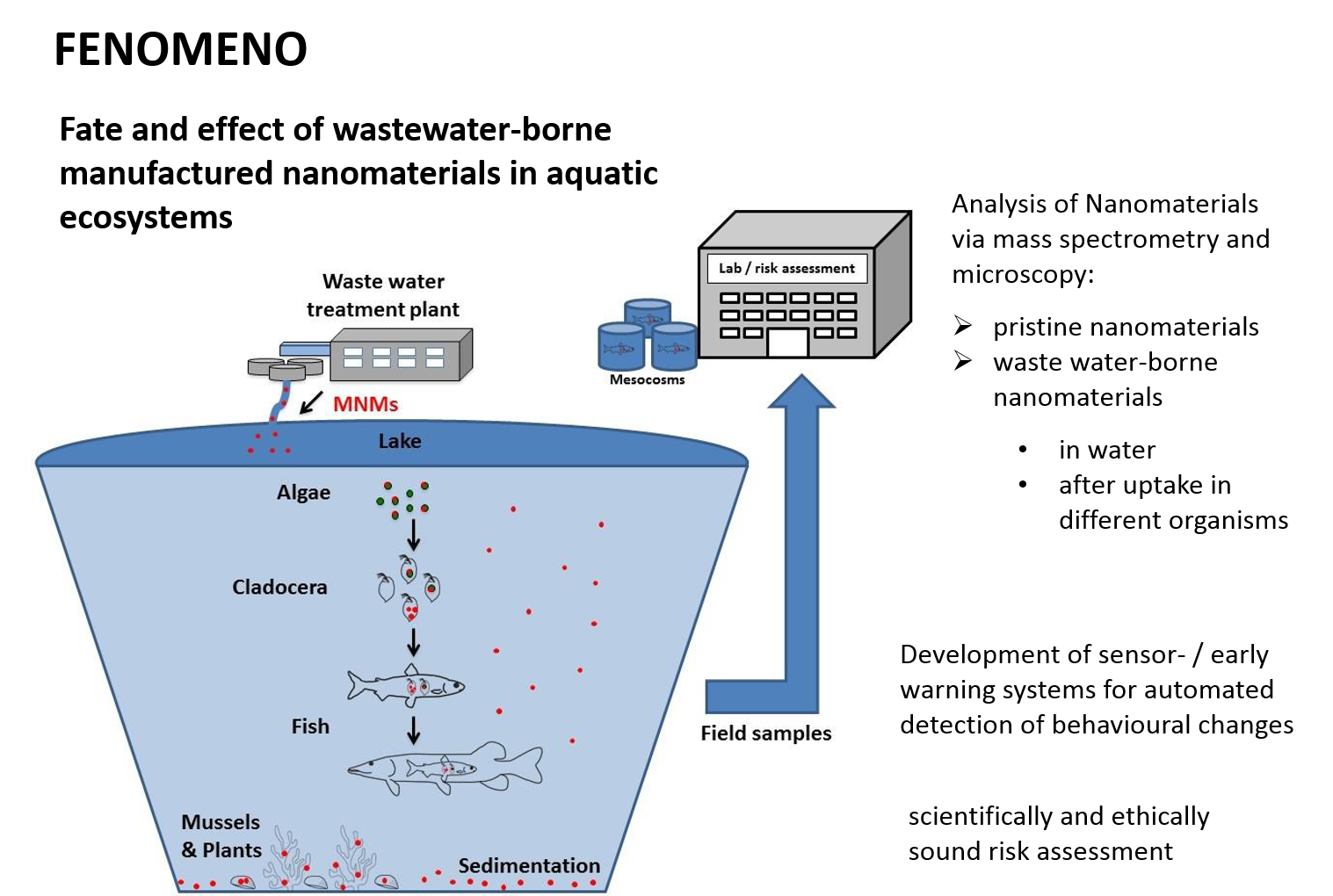FENOMENO – Fate and effect of wastewater-born manufactured nanomaterials in aquatic ecosystems
Nowadays many everyday products contain very small particles, the so-called nanoparticles (NP), which are smaller than 100 nm. For example nanoscale titanium dioxide is used in sun screen or nano silver in functional sportswear.

These nanoparticles are transported via our personal hygiene and laundry in our sewage treatment plants and from there into our waters. But what happens with these wastewater-borne nanoparticles in the water? Are they taken up by organisms and thus enter the food chain?
The FENOMENO project is going to answer these questions using two approaches: (1) tracking the route of silver nanoparticles and titanium dioxide nanoparticles in a natural food chain (algae – water fleas – juveniles – predatory fish) in Lake Mondsee in Austria and in parallel (2) analysing in detail the individual members of the food chain in the laboratory.
For the analysis wastewater-borne silver nanoparticles and titanium dioxide nanoparticles are being used, meaning these nanoparticles had passed a model sewage treatment plant. Using high resolution mass spectrometry and microscopy will allow the researcher to determine whether and if so how the nanoparticles have changed after passing through the model wastewater treatment plant. Algae are the exposed to these “modified” nanoparticles analysing nanoparticles uptake or attachment to the algae.
Water fleas (Daphnia) are key organisms in the aquatic food chain as they’re eating algae on the one hand and on the other hand are being food for young fish. By means of various test series the project is trying to determine the effects of these nanoparticles on the behaviour of the daphnia (movements, heart rate, etc.), on the reproductive success and other important criteria. All parameters are going to be investigated with short term and long term exposure of the daphnia to nanoparticles or nanoparticle exposed algae. 3D-tracking of cameras are going to be used to record the behavioural changes of daphnia providing a tool for an automated analysis and tracking of the Daphnias’ movements that later. Thus daphnia can be applied as biosensors or early warning system for nanoparticles in water. Uptake of nanoparticles and localisation within the daphnia will be investigated with the help of the different microscopic techniques.
The Portuguese partners will explore the biological effects of nanoparticles in the algae, daphnia and fish on a molecular and biochemical level. The Austrian partner is investigating the temporal and spatial distribution of coarse fish and predators by means of chemical, microscopic, molecular and biochemical methods.
In addition to invaluable methodology development and novel nanoecotoxicology data, FENOMENO will not only elucidate the fate and effect of waste water-borne nanoparticles in the aquatic food chain but at the same time contribute to provide the foundations for a consolidated framework to address risks of nanoparticles use and its management for humans and the environment
FENOMENO Project Website: www.fenomeno-nano.de